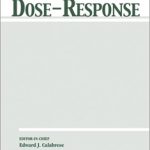José Enrique Eizayaga, María Isabel Pozzi, María Clara Canan, Laura Saravia
Prevalence and likelihood ratio of symptoms in patients with good therapeutic response to Lycopodium clavatum. A retrospective study
Homeopathy, 2016, 105 (1), 78-83

Background – Assessment of the likelihood ratio (LR) of symptoms has been proposed as a rational means for detecting indicators to homeopathic medicines.
Aims – To investigate the prevalence and LR of symptoms commonly attributed to the homeopathic medicine Lycopodium clavatum (Lyc). Secondarily, to answer the question if experienced homeopaths could intuitively infer which the main symptoms of this medicine are.
Methods – The presence of 35 selected symptoms, prescribed medicines and therapeutic response were assessed retrospectively. The symptoms’ prevalence in the Lyc responding population and the LR of the symptoms compared to their prevalence in the remainder of the population were calculated.
Results – Two hundred and two Lyc and 550 non Lyc cases (total 752) were included for analysis. Twenty-two symptoms were confirmed as pertaining to Lyc’s semiology (prevalence %; LR): contemptuous (3.3; 6.7), urinary stones history (2.7; 5.4), egotism (5.6; 3.6), dictatorial (33.3; 3.4), haughty (8.7; 3.3), sleeps on abdomen (3.3; 3.3), intolerance to clothing in abdomen (12.0; 3.1), reproaches (4.0; 3.0), helplessness (24.0; 2.7), fear of failure (10.7; 2.6), irritability on waking in the morning (16.7; 2.5), constipation alternating with diarrhea (8.7; 2.5), intolerant to contradiction (59.3; 2.3), want of self confidence (30.0; 2.4), abdominal distension after eating (23.3; 2.1); ailments from anticipation (32.0; 1.9), irritability before menses (23.3; 1.8), conscientious (26.0; 1.6), desire of sweets (52.0; 1.6), desire of chocolate (16.7; 1.6), lack of vital heat (41.3; 1.3), and flatterer (1.3; ∞). Surveyed homeopaths’ intuitive inferences correlated well with symptoms’ prevalence but not with their LR.
Conclusions – Lycopodium’s main symptoms are well known by homeopaths, but their knowledge correlates well with the symptoms’ prevalence and not with their LR. Retrospective assessment of prevalence and LR of symptoms in good responders might be a means for better selection of symptoms for prospective studies.







